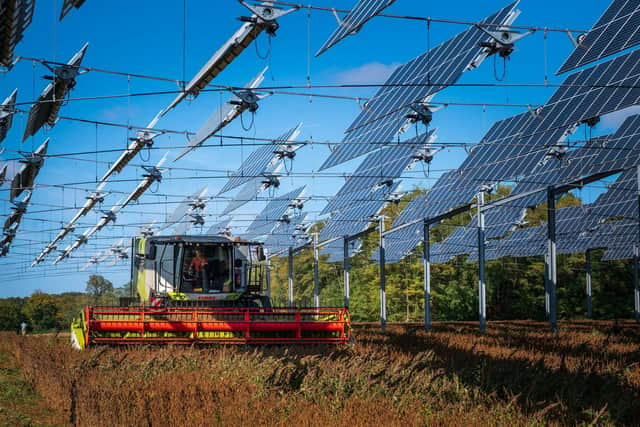Climate change: Global renewable energy boom gives hope for the future – Dr Richard Dixon
Renewable energy prices are tumbling and installation rates are surging ahead. In almost every part of the world, it is cheaper to install wind and solar than it is to invest in new fossil-fuel power generation. Globally, renewable energy grew by a remarkable 50 per cent, meaning that the United Nations climate talks’ promise of tripling renewable energy generation by 2030 may well be delivered. Around the world, renewables are expected to be generating more electricity than coal by early 2025.
The EU increased its renewable electricity capacity by 50 per cent in 2023. China added more solar panels just in 2023 than all the panels operating the whole of the US, the world’s second-largest solar user. Just those additional panels could power Scotland 50 times over at peak output. China also tripled its storage capacity for electricity, important for managing a mix of renewable electricity generation.
Advertisement
Hide AdAdvertisement
Hide AdNew figures show that Scotland generated the equivalent of 113 per cent of our electricity demand from renewables in 2022, an increase of 26 per cent on the year before. New figures show there were estimated to be 42,000 jobs in the Scottish renewable energy sector in 2021, a 56 per cent increase on the year before.


The industry already has an economic output of £10 billion a year and, in offshore wind, there is expected to be a ten-fold increase in generating capacity over the coming decade. Great news for investment and jobs, but we still need to do much more to make sure more components are manufactured here in Scotland.
Internal combustion engine’s demise
In transport, fossil-fuelled vehicle sales peaked in 2017 and, in two or three years, there will be more of them scrapped than sold globally, beginning the terminal decline of the internal combustion engine. The rapid growth in electric vehicles continues, with EV sales predicted to reach two-thirds of all vehicle sales by 2030.
Meanwhile, the cost of nuclear continues to spiral upwards, with the latest announcement that Hinkley Point C is likely to cost something like £46bn compared to the original estimate of £24bn, with the first reactor now not likely to start generating electricity until 2031. That’s 14 years late. The world passed peak nuclear generation in 2006 and the industry now generates less than ten per cent of the world’s electricity, down from a peak of 17 per cent in 1996.
In the US, Joe Biden has put a hold on 17 new gas export terminals because of climate concerns, and emissions from coal use have hit at a new low. In Europe, the climate-leading nations are talking about setting a tough 2040 target for the EU, and the bloc is going to ban the sales of diesel lorries and buses by that date. India’s railways are going to be net zero by 2030. And, in good news about keeping the carbon we have locked up in trees, the new government in Brazil has cut deforestation rates by 50 per cent.
The rise and rise of renewable energy is essential if we are serious about reducing climate change emissions, especially since we need to change our heating and transport systems so they run on electricity. Current trends, at home and globally, are taking us rapidly in the right direction.
Dr Richard Dixon is an environmental campaigner and consultant
Comments
Want to join the conversation? Please or to comment on this article.